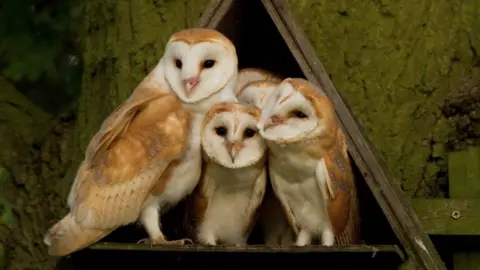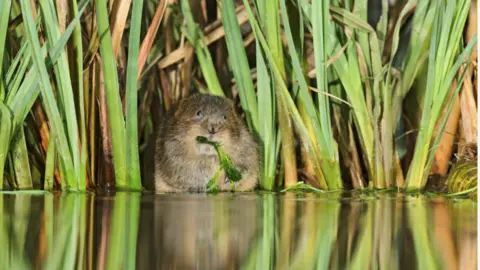Wildlife doing well despite 'challenging' conditions
 Russell Savory
Russell SavoryA new species of fungi and sightings of rare migrant birds were among the wildlife highlights for last year, naturalists have said.
The Berkshire, Buckinghamshire & Oxfordshire Wildlife Trust (BBOWT) said changing weather patterns and extreme rain made 2024 a "difficult year for our native for wildlife", but its annual survey revealed encouraging success stories.
After two blank years, two pairs of barn owls successfully fledged young at Chimney Meadows in Oxfordshire.
Dartford warblers also continued to increase at Snelsmore Common in Berkshire, where fledged young were spotted for the first time in many years.
An unusual bird of prey spotted at Warburg Nature Reserve was provisionally identified as a dark morph booted eagle, the trust said.
It is likely to be accepted as the first recorded sighting in the UK.
 Terry Whittaker
Terry WhittakerA bat survey at Moor Copse near Reading identified no less than 12 different bat species, as well as eight species of small mammal, including hazel dormouse and water vole.
Twenty seven nightjar were recorded at Greenham and Snelsmore Commons in Berkshire on 21 June - the highest ever count for a single survey date.
An entirely new UK species of fungi was discovered at Rushbeds Wood by the Bucks Fungus Group.
DNA analysis confirmed the small brown mushroom was a match for a newly described species, a pseudosperma maleolens.
It is the third new species found at Rushbeds Wood in recent years.
BBOWT's Senior Ecologist, Colin Williams, said: "All of this is testament to the fantastic work of our nature reserve volunteers and work parties, wildlife trainees and staff."
BBOWT said it shows the importance of reserves in helping species to thrive.
It wants to see 30% of land in the region well-managed for wildlife by 2030 and launched a £3m Nature Recovery Fund appeal in 2023 to enable it to expand its work.
You can follow BBC Oxfordshire on Facebook, X (Twitter), or Instagram.
